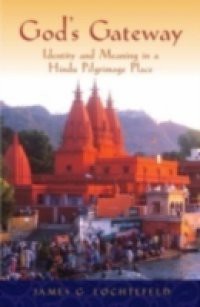A celebrated Hindu pilgrimage site, Hardwar lies on the river Ganges at the edge of the Himalayas. Its identity as a holy place is inextricably tied to the mythology and reality of the Ganges, and traditional sources overwhelmingly stress this connection. Virtually nothing has been written about Hardwars history and development, although the historical record reveals striking changes of the past few centuries. These changes have usually reflected worldly forces such as shifting trade routes, improved transportation, or political instability. Yet such mundane influences have been ignored in the citys sacred narrative, which presents a fixed, unchanging identity. The citys complex identity, says Lochtefeld, lies in the tension between these differing narratives. In this fieldwork-based study, Lochtefeld analyzes modern Hardwar as a Hindu pilgrimage center. He looks first at various groups of local residents -- businessmen, hereditary priests, and ascetics -- and assesses their differing roles in managing Hardwar as a holy place. He then examines the pilgrims and the factors that bring them to Hardwar. None of these groups is as pious as popularly depicted, but their interactions in upholding their own interest create and maintain Hardwars religious environment. In conclusion, he addresses the wider context of Indian pilgrimage and the forces shaping it in the present day. He finds that many modern Hindus, like many modern Christians, feel some dissonance between traditional religious symbols and their 21st-century world, and that they are reinterpreting their traditional symbols to make them meaningful for their time.




















